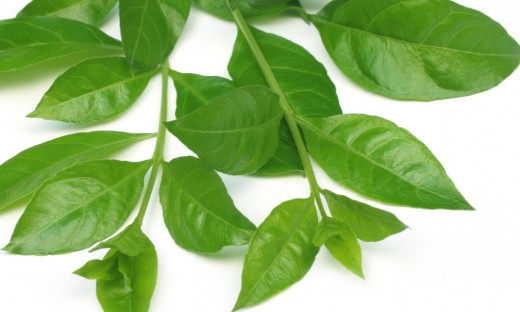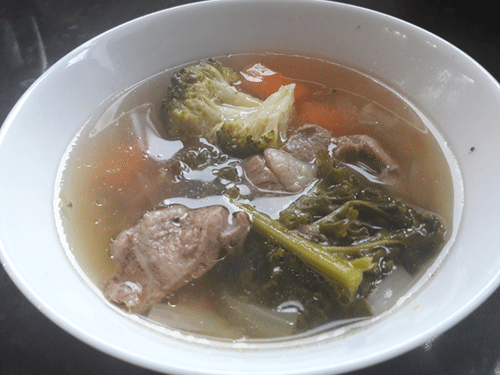Copy Link
Email
Print

Ginger is an herb. The rhizome (underground stem) is used as a spice and also as a medicine. It can be used fresh, dried and powdered, or as a juice or oil. Ginger is commonly used to treat various types of "stomach problems," including motion sickness, morning sickness, colic, upset stomach, gas, diarrhea, nausea and vomiting after surgery, as well as loss of appetite. Other uses include treating upper respiratory tract infections, cough, and bronchitis.
Al-Suhaimi EA, Al-Riziza NA, Al-Essa RA. Physiological and therapeutical roles of ginger and turmeric on endocrine functions. 1. Am J Chin Med. 2011;39(2):215-31. The natural product ginger (Zingiber officinale) has active constituents gingerol, Shogaol and Zerumbone, while turmeric (Curcuma longa) contains three active major curcuminoids, namely, curcumin, demethoxycurcumin, and bisdemethoxycurcumin. They have the same scientific classification and are reported to have anti-inflammatory and many therapeutic effects. This article reviews the physiological and therapeutic effects of ginger and turmeric on some endocrine gland functions, and signal pathways involved to mediate their actions. With some systems and adipose tissue, ginger and turmeric exert their actions through some/all of the following signals or molecular mechanisms: (1) through reduction of high levels of some hormones (as: T4, leptin) or interaction with hormone receptors; (2) by inhibition of cytokines/adipokine expression; (3) acting as a potent inhibitor of reactive oxygen species (ROS)-generating enzymes, which play an essential role between inflammation and progression of diseases; (4) mediation of their effects through the inhibition of signaling transcription factors; and/or (5) decrease the proliferative potent by down-regulation of antiapoptotic genes, which may suppress tumor promotion by blocking signal transduction pathways in the target cells. These multiple mechanisms of protection against inflammation and oxidative damage make ginger and curcumin particularly promising natural agents in fighting the ravages of aging and degenerative diseases, and need to be paid more attention by studies.
The natural product ginger (Zingiber officinale) has active constituents gingerol, Shogaol and Zerumbone, while turmeric (Curcuma longa) contains three active major curcuminoids, namely, curcumin, demethoxycurcumin, and bisdemethoxycurcumin. They have the same scientific classification and are reported to have anti-inflammatory and many therapeutic effects. This article reviews the physiological and therapeutic effects of ginger and turmeric on some endocrine gland functions, and signal pathways involved to mediate their actions. With some systems and adipose tissue, ginger and turmeric exert their actions through some/all of the following signals or molecular mechanisms: (1) through reduction of high levels of some hormones (as: T4, leptin) or interaction with hormone receptors; (2) by inhibition of cytokines/adipokine expression; (3) acting as a potent inhibitor of reactive oxygen species (ROS)-generating enzymes, which play an essential role between inflammation and progression of diseases; (4) mediation of their effects through the inhibition of signaling transcription factors; and/or (5) decrease the proliferative potent by down-regulation of antiapoptotic genes, which may suppress tumor promotion by blocking signal transduction pathways in the target cells. These multiple mechanisms of protection against inflammation and oxidative damage make ginger and curcumin particularly promising natural agents in fighting the ravages of aging and degenerative diseases, and need to be paid more attention by studies.
Al-Suhaimi EA, Al-Riziza NA, Al-Essa RA. Physiological and therapeutical roles of ginger and turmeric on endocrine functions. 1. Am J Chin Med. 2011;39(2):215-31.
 The natural product ginger (Zingiber officinale) has active constituents gingerol, Shogaol and Zerumbone, while turmeric (Curcuma longa) contains three active major curcuminoids, namely, curcumin, demethoxycurcumin, and bisdemethoxycurcumin. They have the same scientific classification and are reported to have anti-inflammatory and many therapeutic effects. This article reviews the physiological and therapeutic effects of ginger and turmeric on some endocrine gland functions, and signal pathways involved to mediate their actions. With some systems and adipose tissue, ginger and turmeric exert their actions through some/all of the following signals or molecular mechanisms: (1) through reduction of high levels of some hormones (as: T4, leptin) or interaction with hormone receptors; (2) by inhibition of cytokines/adipokine expression; (3) acting as a potent inhibitor of reactive oxygen species (ROS)-generating enzymes, which play an essential role between inflammation and progression of diseases; (4) mediation of their effects through the inhibition of signaling transcription factors; and/or (5) decrease the proliferative potent by down-regulation of antiapoptotic genes, which may suppress tumor promotion by blocking signal transduction pathways in the target cells. These multiple mechanisms of protection against inflammation and oxidative damage make ginger and curcumin particularly promising natural agents in fighting the ravages of aging and degenerative diseases, and need to be paid more attention by studies.
The natural product ginger (Zingiber officinale) has active constituents gingerol, Shogaol and Zerumbone, while turmeric (Curcuma longa) contains three active major curcuminoids, namely, curcumin, demethoxycurcumin, and bisdemethoxycurcumin. They have the same scientific classification and are reported to have anti-inflammatory and many therapeutic effects. This article reviews the physiological and therapeutic effects of ginger and turmeric on some endocrine gland functions, and signal pathways involved to mediate their actions. With some systems and adipose tissue, ginger and turmeric exert their actions through some/all of the following signals or molecular mechanisms: (1) through reduction of high levels of some hormones (as: T4, leptin) or interaction with hormone receptors; (2) by inhibition of cytokines/adipokine expression; (3) acting as a potent inhibitor of reactive oxygen species (ROS)-generating enzymes, which play an essential role between inflammation and progression of diseases; (4) mediation of their effects through the inhibition of signaling transcription factors; and/or (5) decrease the proliferative potent by down-regulation of antiapoptotic genes, which may suppress tumor promotion by blocking signal transduction pathways in the target cells. These multiple mechanisms of protection against inflammation and oxidative damage make ginger and curcumin particularly promising natural agents in fighting the ravages of aging and degenerative diseases, and need to be paid more attention by studies.
Link to this article: Show: HTML Link • Full Link • Short Link
Share or Bookmark this page: You will need to have an account with the selected service in order to post links or bookmark this page.





|
Related Articles:
- Synbiotic (Probiotic and Ginger Extract) Loaded Floating Beads: A Novel Therapeutic Option in an Experimental Paradigm of Gastric Ulcer
- 4-Shogaol, an Active Constituent of Dietary Ginger, Inhibits Metastasis of MDA-MB-231 Human Breast Adenocarcinoma Cells by Decreasing the Repression of NF-?B/Snail on RKIP
- Inhibition of LPS Binding to MD-2 Co-Receptor for Suppressing TLR4-Mediated Expression of Inflammatory Cytokine by 1-Dehydro-10-Gingerdione From Dietary Ginger
- Zerumbone, a Southeast Asian Ginger Sesquiterpene, Induced Apoptosis of Pancreatic Carcinoma Cells Through P53 Signaling Pathway
- Variation in Concentration and Labeling of Ginger Root Dietary Supplements
- Ginger Root Associated with Preventing Colon Cancer, Study
- Ginger: An Excellent Natural Remedy
- Ginger Beneficial for Relieving Pregnancy-Related Nausea
- Ibn al-Qayyim: Ginger is Beneficial for Digestion, Eyesight and Nausea Among Other Benefits
- Spices for Health
You must be registered and logged in to comment.
Most Popular
Latest Articles
Popular Subjects
Health, fitness and longevity
Based upon the principles of health
in the Qur'an and Prophetic Traditions.
HealthyMuslim.Com
There are two bounties in which
most people lose out: good health
and free time. Al-Bukhari.
The information on this site is provided for educational purposes only. It is not intended as a substitute for professional advice of any kind.























